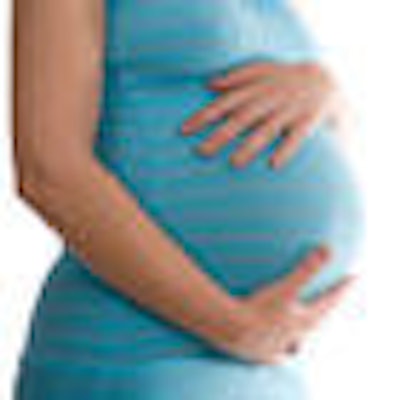
Pregnant women who take potent topical corticosteroids just before and during pregnancy risk fetal growth restriction in their infants, but there is no risk of fetal orofacial clefts with any form of corticosteroid taken by pregnant women, a pair of studies has found.
One team investigated the outcomes of infants delivered to 35,503 pregnant women prescribed topical corticosteroids shortly before and during pregnancy and to another 48,630 unexposed women in the U.K. (Journal of Investigative Dermatology, April 2011, Vol. 31:4, pp. 884-891). They did not find an association between maternal exposure to topical corticosteroids and cleft lip or cleft palate. However, they did uncover a twofold relative risk of fetal growth restriction associated with maternal exposure to potent or very potent topical corticosteroids.
The group published a Cochrane review two years ago that also found no significant link between use of topical corticosteroids by pregnant women and congenital abnormalities, although it did point to an association between very potent topical corticosteroids and low birth weight (Cochrane Database of Systematic Reviews, July 8, 2009, Issue 3).
Another set of researchers, from Denmark, pored over data from 51,973 women who took corticosteroids during the first trimester of their pregnancies (Canadian Medical Association Journal, April 19, 2011, Vol. 183:7, pp. 796-804). They initially found an association between use of topical steroids and cleft lip, but after performing further analyses, they determined that the association is not causal.
"I think the Danish team's final conclusion is congruent with our study and with our Cochrane review, that orofacial cleft is not associated with maternal exposure to topical steroids," said the lead author of the first set of studies, Ching-Chi Chi, MD, MMS, DPhil, director and assistant professor in the department of dermatology and center for evidence-based medicine at Chang Gung Memorial Hospital in Taiwan.
Dr. Chi's team ascertained the cases of pregnant women exposed and unexposed to corticosteroids from the U.K. General Practice Research Database. They found a nonsignificant adjusted relative risk of 1.05 between orofacial cleft and maternal receipt of one or more prescription for topical corticosteroids from 85 days before the last menstrual period to gestational week 12.
The association was also not significant when the investigators analyzed only an exposure period of the first 12 gestational weeks, or when they analyzed each of the two subtypes of orofacial cleft: cleft lip with or without palate and cleft palate alone. However, they did find an adjusted relative risk of 2.08 for fetal growth restriction with maternal exposure to potent or very potent topical corticosteroids.
The Danish team analyzed data on all live births in Denmark between January 1, 1996, and September 30, 2008, to ascertain which pregnant women were and were not exposed to corticosteroids. They found an odds ratio of 1.45 for cleft lip with or without cleft palate among the children born to women who used topical corticosteroids during the first trimester.
However, after further analyses they came to the conclusion that "the topical association is not causal but, rather, a random result due to multiple statistical comparisons," lead investigator Anders Peter Hviid, MSc, DrMedSci, senior investigator in the department of epidemiological research at Statens Serum Institut, told DrBicuspid.com.


















